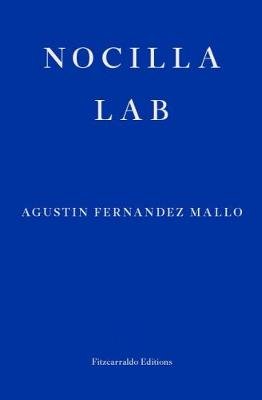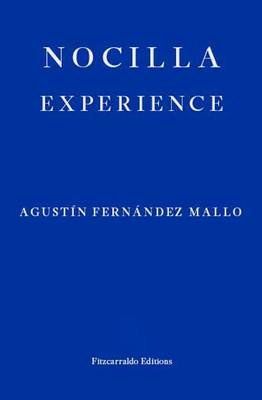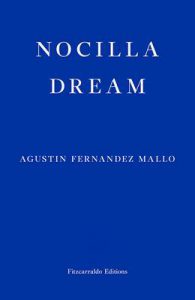
Agustín Fernández Mallo is a physicist who, in his Nocilla Trilogy, has been writing the universe as understood by contemporary science into novel form. Nocilla Dream and Nocilla Experience are structured as networks of themes, images and ideas, without a traditional anchor-point around which to revolve. Now here’s the third part of the trilogy, Nocilla Lab, which takes what Dream and Experience did with the world at large and applies it to notions of individual identity – in this novel, it’s the protagonist who is without centre.
First off, let me say that this is a brilliant translation by Thomas Bunstead: Nocilla Lab is divided into four sections, each written in a distinct style, yet with subtle interplay between them. The first part is (bar a few quoted passages) written as a single sentence over seventy pages. In this section, the narrator (Fernández Mallo himself, or a version of him) describes visiting Sardinia with his girlfriend, to work on what he refers to mysteriously as their “Project” (which they later abandon). The narration here is propulsive and disorienting all at once, looping back on itself and weaving together past and future. But there’s also a certain rawness to it, a sense that these are thoughts coming straight from the narrator’s mind.
This section also summarises what I think of as Nocilla Lab‘s key theme, the fundamental similarity of things and people:
…one travels to different countries and sees there very different things flora- and fauna-wise, customs- and appearances-wise, all the things that distinguish races and cultures, and yet, sooner or later, one comes to the undeniable conclusion or formulation of what might even be a law, namely that everything, looked at in sufficient detail, is identical to its counterpart on the far side of the world: zoom in and the leaf of a scrub plant in Sardinia is the same as that of an Alaskan pine tree, the skin pores of a Sudanese person are identical to those of an Inuit, and there really is nothing between a Buddha figure in Bangkok and a statuette of Christ in Despeñaperos, Jaén, and so it is with everything…
One of the ways this theme plays out in Nocilla Lab is by undermining the idea of the protagonist as an individual with a coherent identity. The novel’s second part takes place in recognisably the same situation as its first, with (one is given to assume) the same characters. But the prose is more conventionally novelistic, which makes this section feel different – more distant, more settled. The narrator and his girlfriend come across an old prison which has been turned into an eco-hotel (albeit mainly so the proprietor can keep himself to himself, rather than with the intention of having many guests). What initially may seem quirky turns darker when the hotel owner claims to be named Agustín Fernández Mallo, and working on a Project similar to the narrator’s.
Up to now, the events of Nocilla Lab could pretty much have passed for real life, but this… this is the sort of thing that happens in a novel, so it’s only fitting that it’s related in prose that reads like a novel. But this turn of events also raises the question: who is the narrator? Can we trust him to be the same individual in the second part as he was in the first? This question becomes even more pointed in the novel’s third section, a typed manuscript, because here the narrator has assumed the hotelier’s identity and apparently let go of his own previous one. There’s continuity of narrative between the novel’s parts, but the sense of a single ‘I’ behind it dissolves.
The form taken by each of Nocilla Lab‘s sections also moves us progressively further away from the narrator. By the fourth part, we’re firmly on the outside looking in, at a comic strip. The protagonist here looks like Fernández Mallo, though when asked who he is, he replies, “Not sure.” This individual travels to an oil rig where he meets the writer Enrique Vila-Matas, who tells a story. Two men hear similar noises: one is being kept awake by his watch, the other a prisoner about to be set free. The same thing means something very different depending on the context – rather like the narrator, who changes with the scene, until he disappears within versions of himself.
Elsewhere
I must mention MacKenzie Warren’s excellent review of Nocilla Lab at Splice, which helped clarify some of my thinking here.
Book details
Nocilla Lab (2009) by Agustín Fernández Mallo, tr. Thomas Bunstead (2018), Fitzcarraldo Editions, 192 pages, paperback (source: personal copy).


Recent Comments